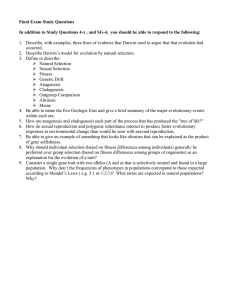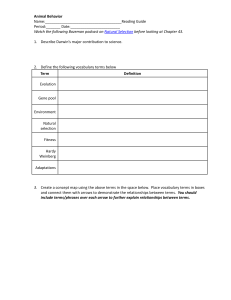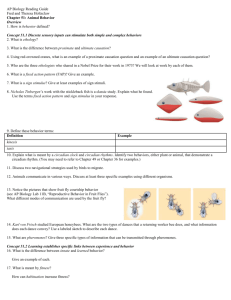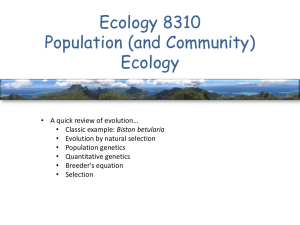SBI3UI Patterns of Selection Alleles are considered successful and
advertisement
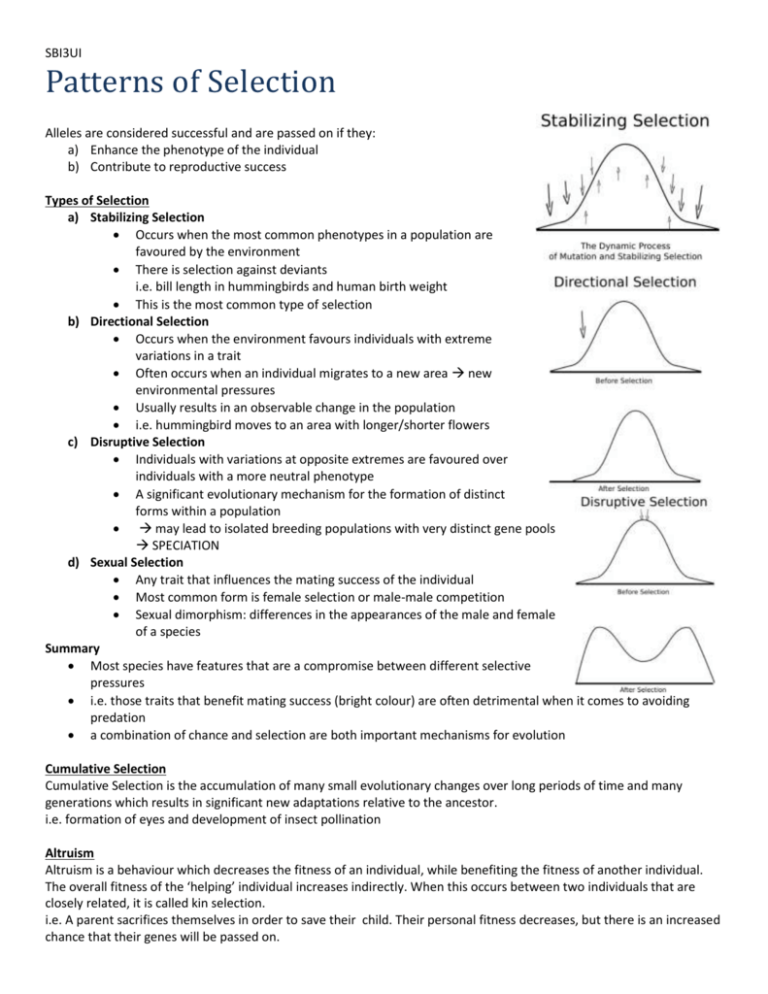
SBI3UI Patterns of Selection Alleles are considered successful and are passed on if they: a) Enhance the phenotype of the individual b) Contribute to reproductive success Types of Selection a) Stabilizing Selection Occurs when the most common phenotypes in a population are favoured by the environment There is selection against deviants i.e. bill length in hummingbirds and human birth weight This is the most common type of selection b) Directional Selection Occurs when the environment favours individuals with extreme variations in a trait Often occurs when an individual migrates to a new area new environmental pressures Usually results in an observable change in the population i.e. hummingbird moves to an area with longer/shorter flowers c) Disruptive Selection Individuals with variations at opposite extremes are favoured over individuals with a more neutral phenotype A significant evolutionary mechanism for the formation of distinct forms within a population may lead to isolated breeding populations with very distinct gene pools SPECIATION d) Sexual Selection Any trait that influences the mating success of the individual Most common form is female selection or male-male competition Sexual dimorphism: differences in the appearances of the male and female of a species Summary Most species have features that are a compromise between different selective pressures i.e. those traits that benefit mating success (bright colour) are often detrimental when it comes to avoiding predation a combination of chance and selection are both important mechanisms for evolution Cumulative Selection Cumulative Selection is the accumulation of many small evolutionary changes over long periods of time and many generations which results in significant new adaptations relative to the ancestor. i.e. formation of eyes and development of insect pollination Altruism Altruism is a behaviour which decreases the fitness of an individual, while benefiting the fitness of another individual. The overall fitness of the ‘helping’ individual increases indirectly. When this occurs between two individuals that are closely related, it is called kin selection. i.e. A parent sacrifices themselves in order to save their child. Their personal fitness decreases, but there is an increased chance that their genes will be passed on.
